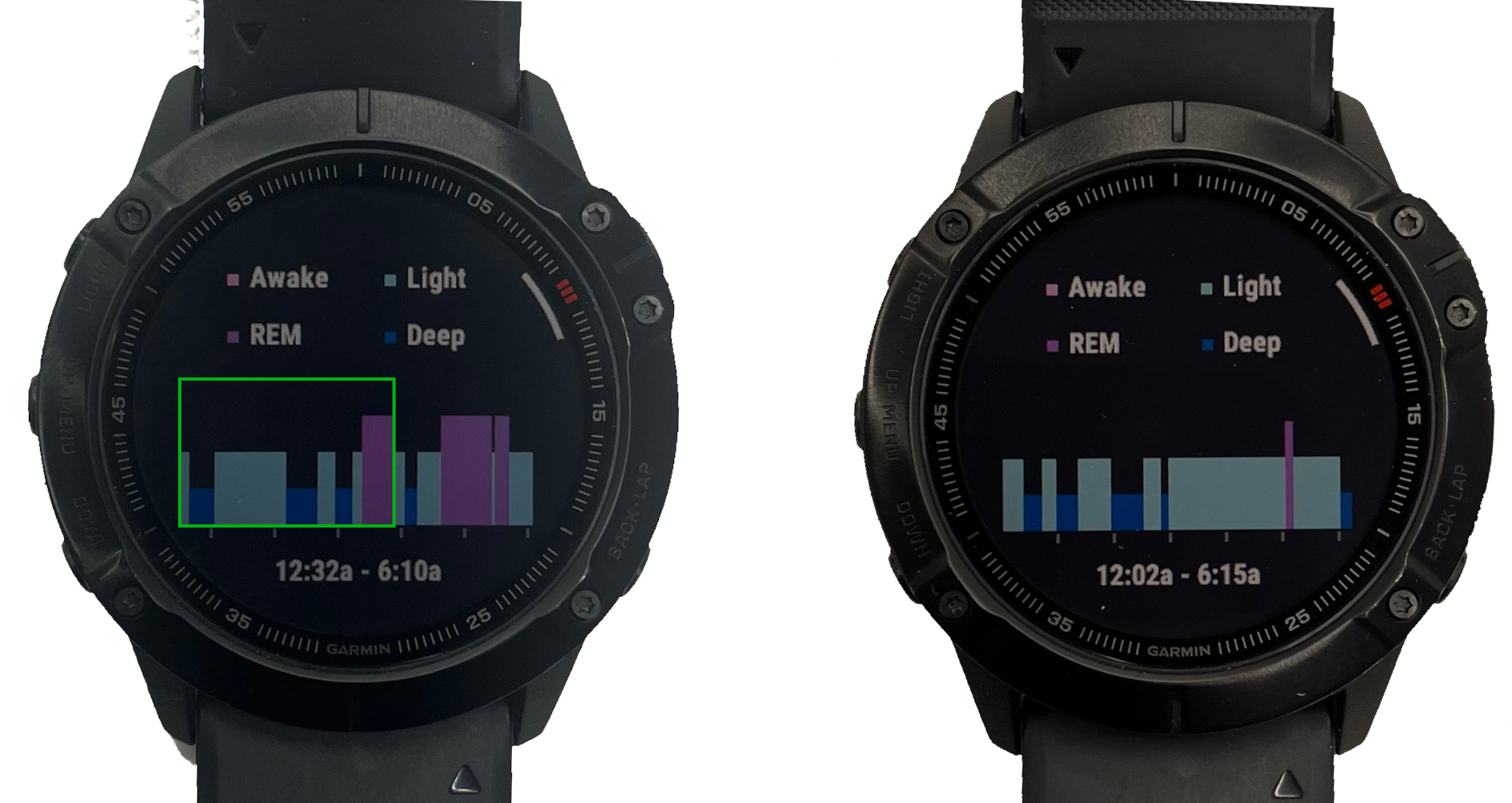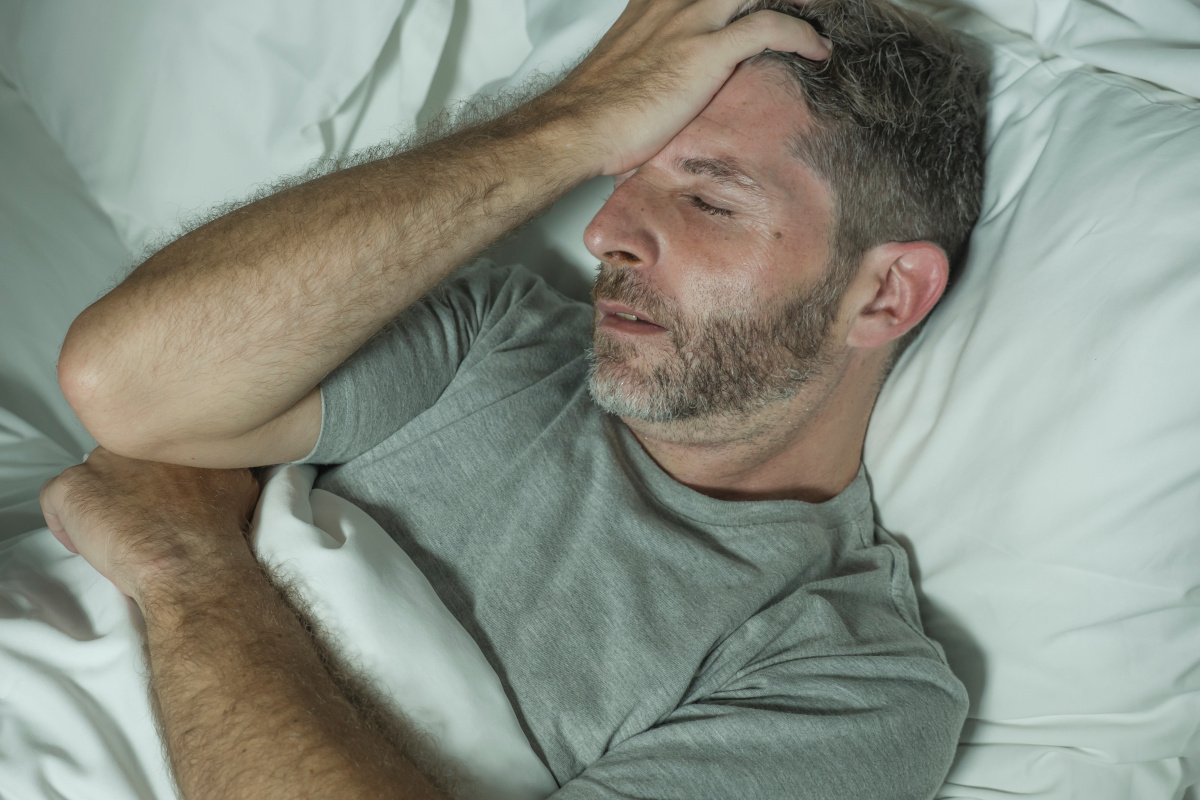Germans are sleeping less and less well. Various surveys and studies show that more and more people are suffering from problems falling asleep or sleeping through the night, and an increasing proportion of the population is even suffering from severe insomnia. The health reports of the large health insurance companies show alarming results: Extrapolated to the population, about 34 million people sleep poorly. But what actually constitutes good sleep? And what does electrosmog have to do with our sleep?
What does our brain do during sleep?
Our body regenerates during sleep. In order to wake up refreshed, our brain goes through different cycles during sleep, in which completely different brain waves - measurable in an EEG - prevail. Our brain waves divide into 3 different types of brain waves during sleep, which show different frequencies:
- Delta waves with a frequency of 1 - 3 Hz occur mainly in deep sleep. If we are awake, these waves are only measured extremely rarely. In the deep sleep phase, healing processes are controlled in our body, it also has a great importance for the functioning of the immune system. Growth hormones are also released during deep sleep.
- Theta waves show a frequency of 4 - 7 Hz. They characterize the light sleep phase, in which we are asleep but can be easily awakened. In the waking state, theta waves occur during trance states or meditation. Researchers show that our brain is particularly receptive in this state and shows an increased ability to learn and remember - as long as one is not asleep. In children, theta waves sometimes even appear permanently in brain activity up to an age between 10 and 12 years.
- Alpha waves with a frequency of 8-10 Hz dominate during falling asleep and mark a stage between sleep and waking. Every person wakes up several times during the night - without even remembering these short waking phases the next morning. Alpha waves dominate these waking phases as well.
Our waking phase, on the other hand, is dominated by beta waves. These waves show a broad frequency spectrum from 13 to over 100 Hz. These can be finely differentiated between relaxed attention (12 - 15 Hz), directed outward attention (15 - 18 Hz), and anxiety or stress (18 - 35 Hz). At even higher frequencies, which can be measured during peak physical and mental performance, we also speak of gamma waves, which cover a range of 35 - 100 Hz or even slightly higher frequencies.
 Which sleep phases are there?
Which sleep phases are there?
Our sleep is roughly divided into 2 phases, the REM phase, in which we dream intensively, and the non-REM phase. The non-REM phase is in turn divided into 3 further stages:
- The falling asleep phase, in which alpha waves slowly change to theta waves.
- The light sleep phase, in which theta waves dominate
- The deep sleep phase, from which we can only be awakened with difficulty and in which delta waves predominate.
The REM phase is characterized by rapid eye movements under the closed eyelids (Rapid Eye Movement). Muscle activity is greatly reduced, although involuntary muscle twitching may occur. The breathing rate is increased in this sleep phase. During the REM phase, mainly theta waves occur, but also alpha and beta waves (which are predominant during wakefulness).
In order to sleep restfully, our body goes through several sleep cycles every night:
After falling asleep, light and deep sleep phases are passed through one to several times, and the sleep cycle is then completed by a REM phase. Such a cycle lasts about 90 minutes and is run through 4-6 times per night. Often we even wake up briefly between two sleep cycles.
What influence does electrosmog have on our sleep?
Low-frequency electric and magnetic direct and alternating fields as well as high-frequency electromagnetic radiation each show specific frequencies - just like our brain waves.
Melatonin is the so-called sleep hormone, while its counterpart, cortisone, dominates our waking phases. Melatonin is strongly determined by light, light pollution (especially by short-wave, bluish light), but also low-frequency fields influence melatonin production. The release of melatonin lowers our body temperature and blood pressure. The body "shuts down." This makes it easier for us to fall asleep and quickly calm down.
High-frequency radiation has been shown to affect our brain's activity during sleep. A half-hour exposure to high-frequency electromagnetic radiation before going to bed is sufficient to measure effects in subsequent sleep. These effects could be measured again and again by P. Achermann et al. in different studies. However, the exact influence this has on our sleep behavior and whether this has health effects has not yet been conclusively researched.
Sources of high-frequency radiation are primarily smartphones, tablets, etc., and (radio) transmission masts. They operate at frequencies in the range of ~390 MHz to ~5.8 GHz. WLAN typically operates with frequencies in the 2.4 GHz range as well as in the 5 GHz range. However, most WLAN routers also emit extremely low-frequency pulses with a frequency of 10 Hz. These are directly in the range of brain frequencies in the sleep-wake cycle. Likewise, these pulses are also responsible for the typical WLAN "chatter" noise when an audio analysis is performed during an electrosmog measurement. Especially these 10 Hz pulses are considered critically by researchers and lead for example to measurable effects in the EMG (electromyogram) of test persons.
Discover RF analyzers with audio function now!
Conclusion
Electrosmog has demonstrable effects on humans. Although most people do not physically feel these effects, high and low frequency electrical and magnetic radiation exposure have measurable effects. Especially in the decade of insomnia, everyone should pay attention to good sleep hygiene and banish sources of interference from the bedroom. You can get an overview of your individual exposure situation in the bedroom with a measurement. We offer precise measuring devices also for private users. Protect yourself and your family and get certainty now!
You are unsure how to reduce your electrosmog exposure? Book your free consultation now!
Book your free initial consultation now!
Editorial office: gigahertz-solutions.de (DG)
Picture sources: #303288794 stock.adobe.com, gigahertz-solutions.de

Do you need help?
We will be glad to help you.
We will be happy to assist you in selecting the appropriate measuring device and also advise you on possible protection solutions.
Just contact us!
Mo-Thu 08:00 am – 5:00 pm / Fr 08:00 am – 1:00 pm
Phone: 0049 9101 / 90 93 - 0
Email: info@gigahertz-solutions.de


